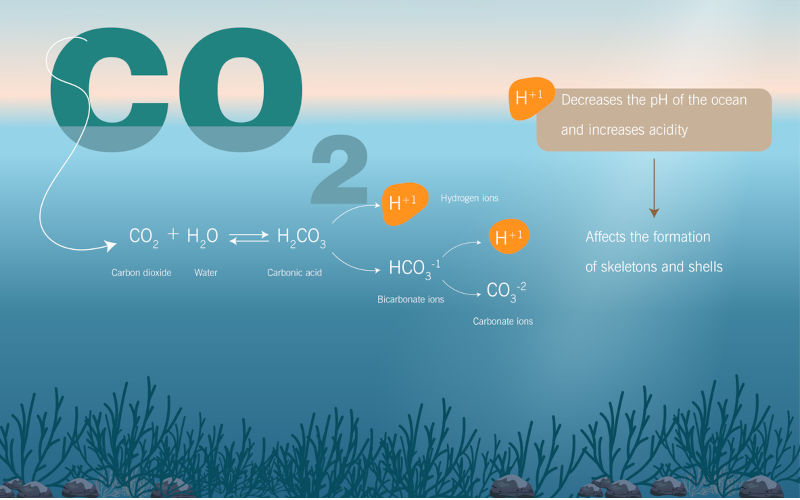Environment: Ocean acidification has left the safe zone for humans
July 13, 2025
Seven of the nine planetary boundaries have now been crossed. Civil society calls for major reform of COP meetings. Big banks fund Australian deforestation. China leaving USA behind in the energy transition.
Ocean acidification exceeds another safe planetary boundary
The concept of planetary boundaries, first proposed in 2009, identifies nine crucial Earth-system processes that, functioning as they have in recent millennia, collectively create a safe environment where humans can thrive and establish complex civilisations. However, the functioning of each system has a measurable boundary beyond which the “sweet spot” for human existence is threatened. The nine boundaries relate to climate change, biodiversity loss, interference with the nitrogen and phosphorus cycles, stratospheric ozone depletion, global freshwater use, change in land use, chemical pollution, air pollution and ocean acidification.
The oceans have been absorbing about 30% of the CO2 that humans have been pumping into the atmosphere and this has increased the water’s acidity. The change in pH (a fall of about 0.1 pH units from just above 8) may seem minor but it is not of purely academic interest as it represents a 30% increase in acidity – the science nerds among you will remember that the pH scale is logarithmic. This affects the physiology, growth, reproduction, habitats, food webs and survival of many marine organisms. Animals with shells and skeletons of calcium carbonate such as corals, crustaceans and molluscs are particularly vulnerable to the change. More acidic water also adversely influences wild and farmed sources of human food.
The 2009 paper on planetary boundaries found that three boundaries had already been crossed. A fourth was added in 2015 and in 2023 the number increased to six. A seventh, the average global level of acidification of the oceans, has now changed by more than 20% compared with the pre-industrial level and consequently has moved beyond the boundary of its safe zone.
The researchers emphasise that the level of ocean acidification naturally varies regionally and understanding pH changes in polar and coastal areas and at different depths must complement attention on the global average. They also recommend that the boundary be halved to 10% and note that only low CO2 emissions will keep at least some parts of the ocean below the current boundary by 2100. Even then, it’s likely that in some areas the acidification of the ocean will exceed 40%.
This is yet more evidence that our addiction to fossil fuels is destroying the stable environment that humanity has enjoyed since the last Ice Age and that global warming is not the only consequence that threatens our health and survival.
Reforming the dysfunctional climate COP meetings
The Paris Agreement of December 2015 was the high-water mark of achievement for the UNFCCC’s COP process, with success due in no small measure to the skill, energy and commitment of three individuals: Christiana Figueres, Ban Ki-moon and the COP21 president Laurent Fabius. Regrettably, since then the COP meetings have progressively degenerated into little more than trade shows for petrostates and the fossil fuel industry. International progress on rapidly reducing greenhouse gas emissions sufficiently to keep global warming under the agreed 1.5 or 2oC has failed to emerge.
More than 200 civil society and Indigenous groups have now issued a statement calling for major reforms that focus on the overall COP process (points 1-5) and the attributes required of host countries (points 6 and 7):
- Switching to majority-based decision making. The current consensus requirement for approval effectively gives every large nation a veto and produces commitments that are weak, ambiguous, unmonitored and unenforceable.
- Stopping “corporate capture” of the meetings. End the corporate sponsorship of COP meetings and the undue influence exerted during negotiations by fossil fuel states and companies and those with large carbon footprints.
- Making negotiations open and transparent, including access to relevant documents.
- Improving nations’ compliance with fulfilling the promises they make through incentives for action and penalties for failure.
- Ensuring that the UNFCCC strengthens collaborations with intergovernmental groups working on intersecting crises such as air pollution, plastic pollution and loss of biodiversity.
- Awarding COP hosting rights only to countries with a demonstrated, genuine commitment to climate action and a good human rights record.
- Ensuring that climate and human rights activists and journalists have access to simple, equitable visa application systems to enter COP host countries and are free to congregate, observe and report proceedings, express their views and protest peacefully.
If I were deciding where the 2026 COP were to be held, I fear Australia would struggle to convince me about the last two points.
Which banks are funding Australian deforestation?
Australia is the only developed country classified as a deforestation hotspot and our banks are funding much of the destruction.
The Australian Conservation Foundation investigated 100 cases of deforestation linked to major banks through mortgages during the 12 months to July 2024. In several cases, mortgages were issued during or just after a bout of land clearing by the borrower and 42 instances are likely to have been Matters of National Environmental Significance that should have been but weren’t referred to the Commonwealth Government for approval.
Across the 100 cases, just over 24,000 hectares were cleared, with three banks, NAB, Rabobank and CommBank, funding the most bulldozers:
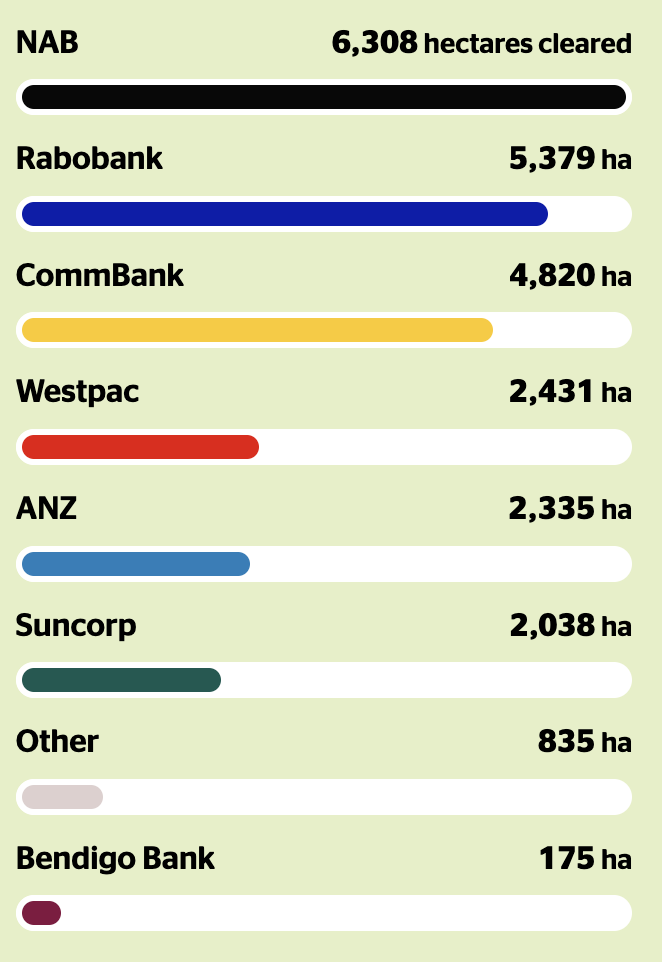
In terms of numbers of mortgages granted, NAB frolics in the upper storey while the other big banks are more mid-storey dwellers:
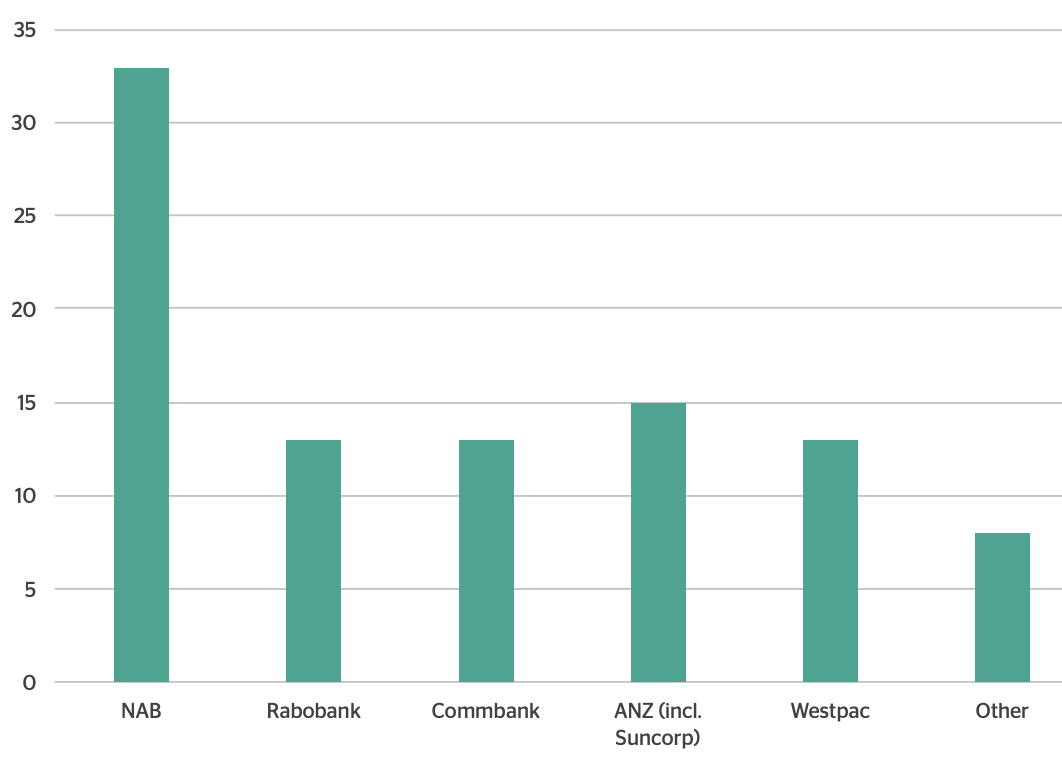
ACF is asking supporters to tell their bank that they need to do better by:
- Adopting a policy to eliminate deforestation from lending portfolios. (In December 2025, Westpac will become the only bank to have a no-deforestation commitment.);
- Investing in expertise and geospatial data to monitor nature-related risks associated with the funds they lend and improve their due diligence;
- Encouraging bank customers in high-risk sectors to transition to nature-positive operations.
Hot air in Washington, but no wind farms in China
In an Independence Day address, President Trump remarked that: “Wind. It doesn’t work, I will tell ya, aside from ruining our fields and our valleys and killing all the birds, and having very, being very weak and expensive. All made in China.
“You know I noticed something, that, with all the windmills that China sends us — where we waste our money, because it’s the most expensive energy — I see that, you know, they make about 95% of ’em, the wind turbines, I have never seen a wind farm in China! Why is that? Somebody check that out.”
Lots of people came to the President’s aid and did indeed check that one out. Here are a few more facts that he can ignore.
China controls clean energy manufacturing
The figure below comes from Bloomberg Green Daily on 27 May 2025.
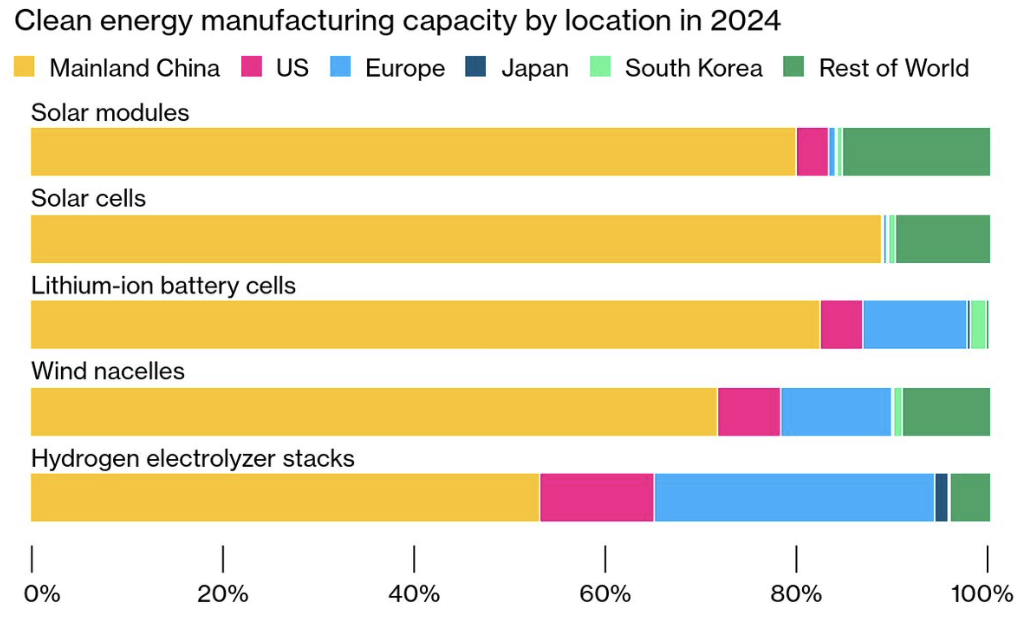
(A wind nacelle is the pod at the top of the wind turbine that contains all the control mechanisms.)
China’s predominance in clean energy manufacturing is set to continue. In 2024, mainland China was responsible for 76% of global clean energy factory investment.
China exports the future while the US looks back
Since 2023, Chinese companies have announced US$168 billion of foreign investments in clean energy manufacturing, generation and transmission. If you go to the link, you can hover over each of the circles on the map below to see details of each investment. Chinese investments in solar and battery plants in the US alone total more than US$13 billion. Chinese investments in Australia have been about US$4.5 billion.
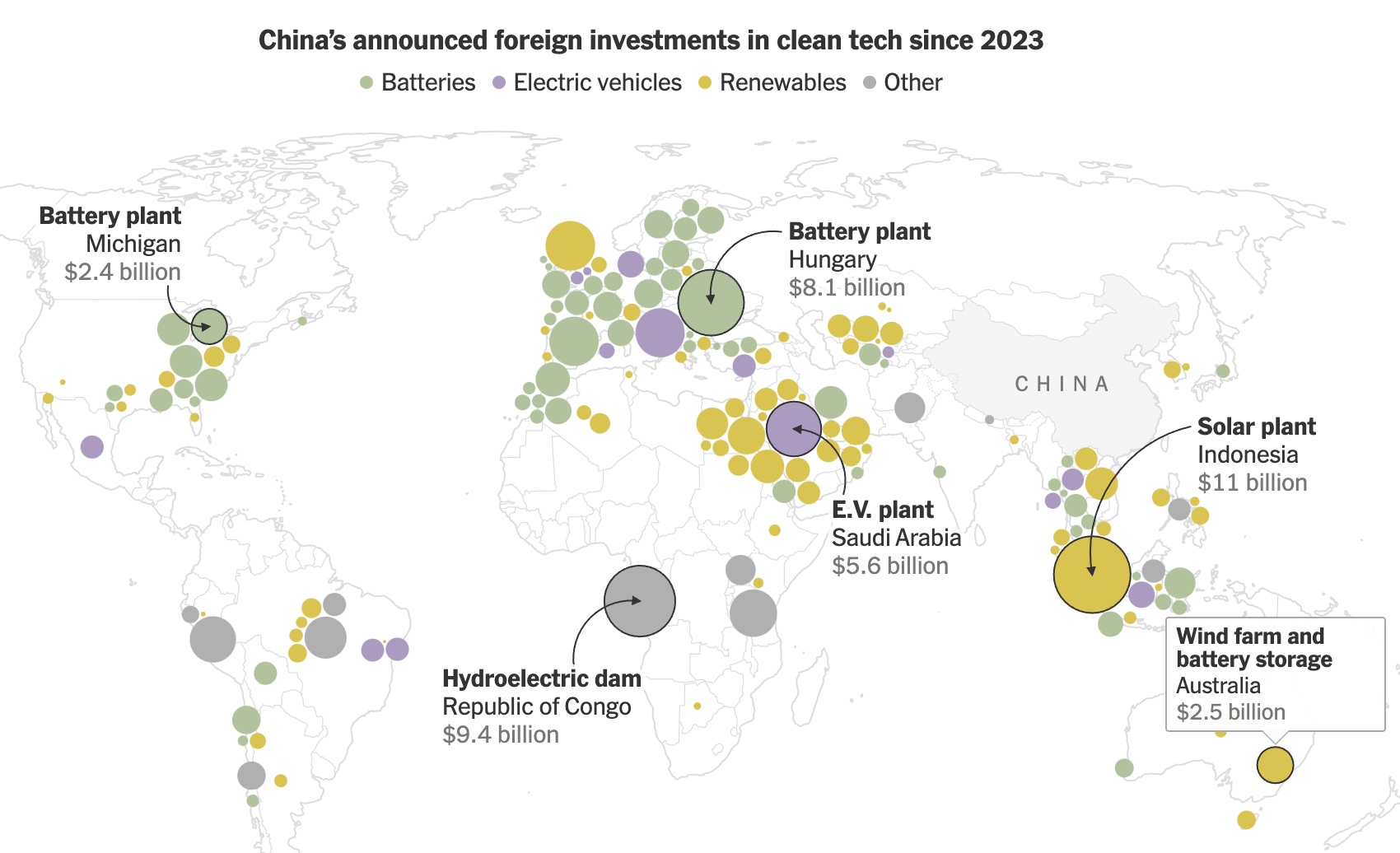
China is leading the world in the installation of clean energy technology and its exports are helping Asia and Europe, in particular, make the green transition. In contrast, the US is trying to maintain the dominance of fossil fuels both at home and overseas. This could hardly be clearer than in the two tables below.
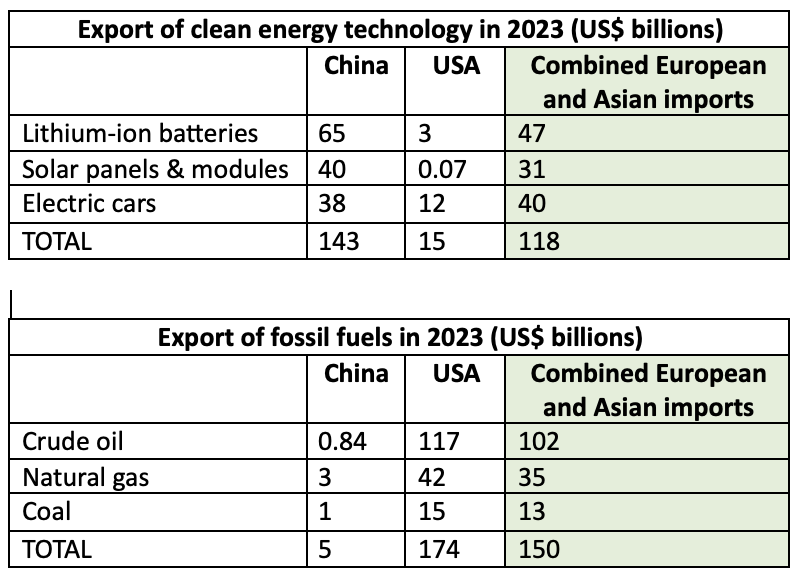
China loves electric buses
There are 780,000 electric buses in the world, about 90% of which are in China.
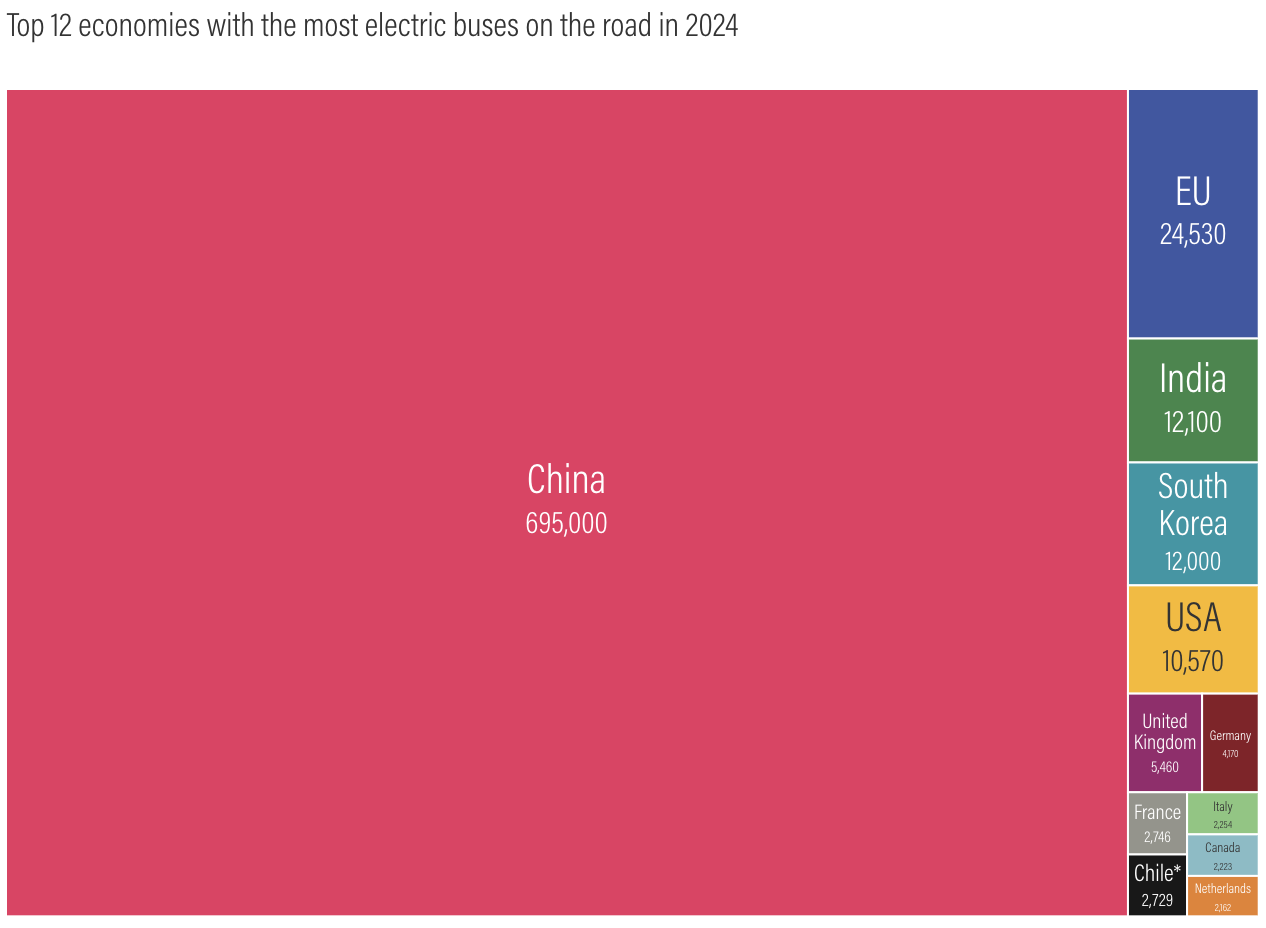
About 6% of bus sales globally were electric in 2024. The figure was 66% in China but, with far fewer buses, Denmark (72%), Finland (57%) and Netherlands (48%) are also rapidly electrifying their fleets.
Public buses, school buses, coaches and the like produce about 5% of global transport-related greenhouse gas emissions.
New ALP MPs update
Last week, I reported that only two of 18 new Labor MPs considered the environment and/or climate change to be a personal priority for their first three years in parliament. Last Saturday, 5 July, The Saturday Paper provided information about nine of the remaining new Labor MPs – three of them nominated the environment, climate change or clean energy as a priority.
So, just five of 27 new ALP caucus members, fewer than 20%, consider the environment and climate to be a current priority. This seems to tells us one or both of two things. First, the new members are simply reflecting the general population’s concern about but reluctance to attach any priority or urgency to the climate and environment. Second, regardless of their personal views, the new chums have read the writing on the wall and see advocating too strongly on these matters as a poor career move in the current parliamentary Labor party.
How governments convert healthy carbon to dangerous carbon
In this six-minute video, Bob Debus, former NSW Minister for the Environment, shows us the destruction wrought by state-sanctioned logging in Glenbog State Forest, 50km west of Bega, NSW. Bob also describes the value of native forests for the conservation of nature and for combating climate change, the stupidity of governments pursuing carbon credits and the need to end native forest logging now.
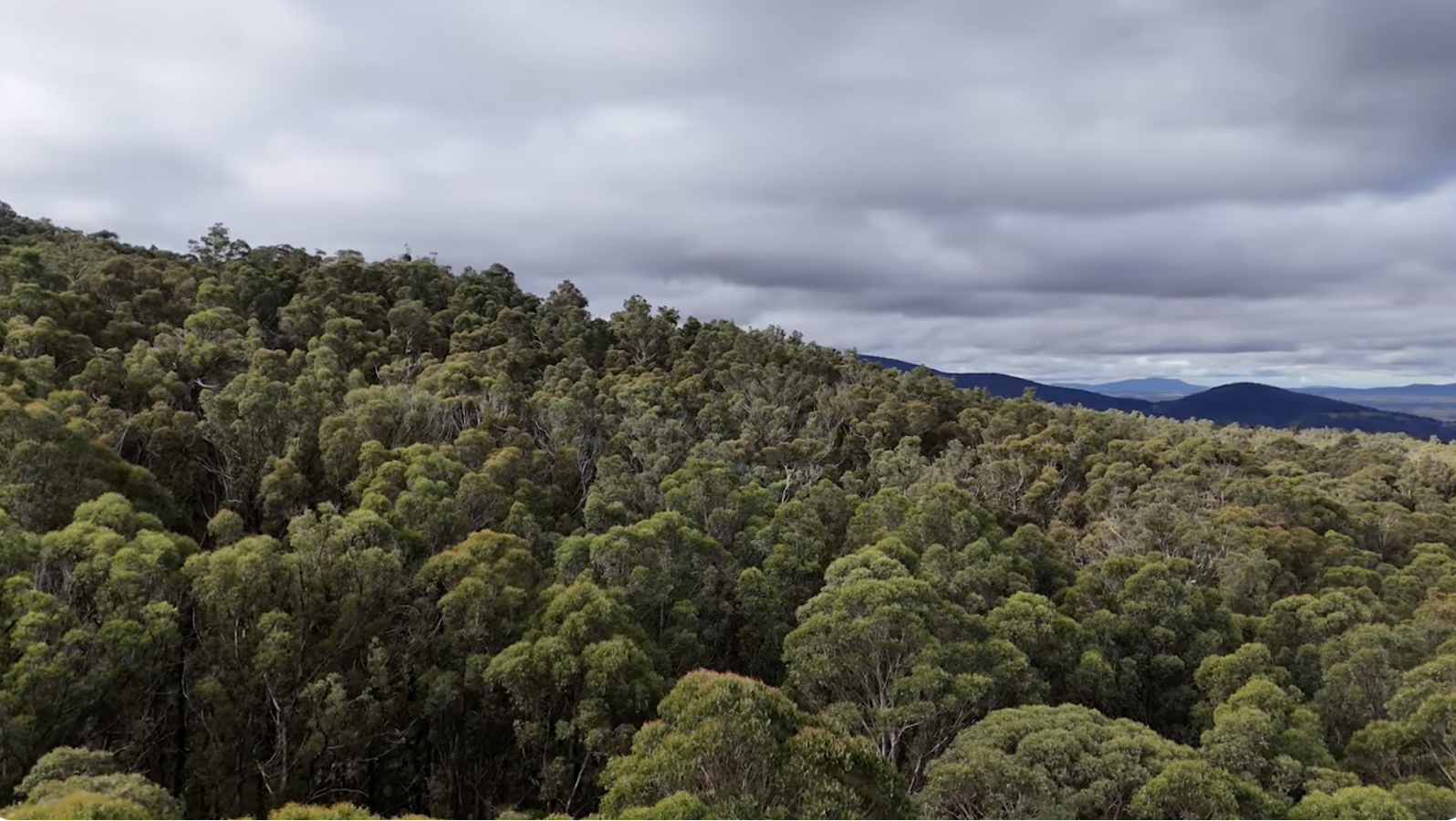
‘This is carbon that is stored for a very long time in a natural situation.’
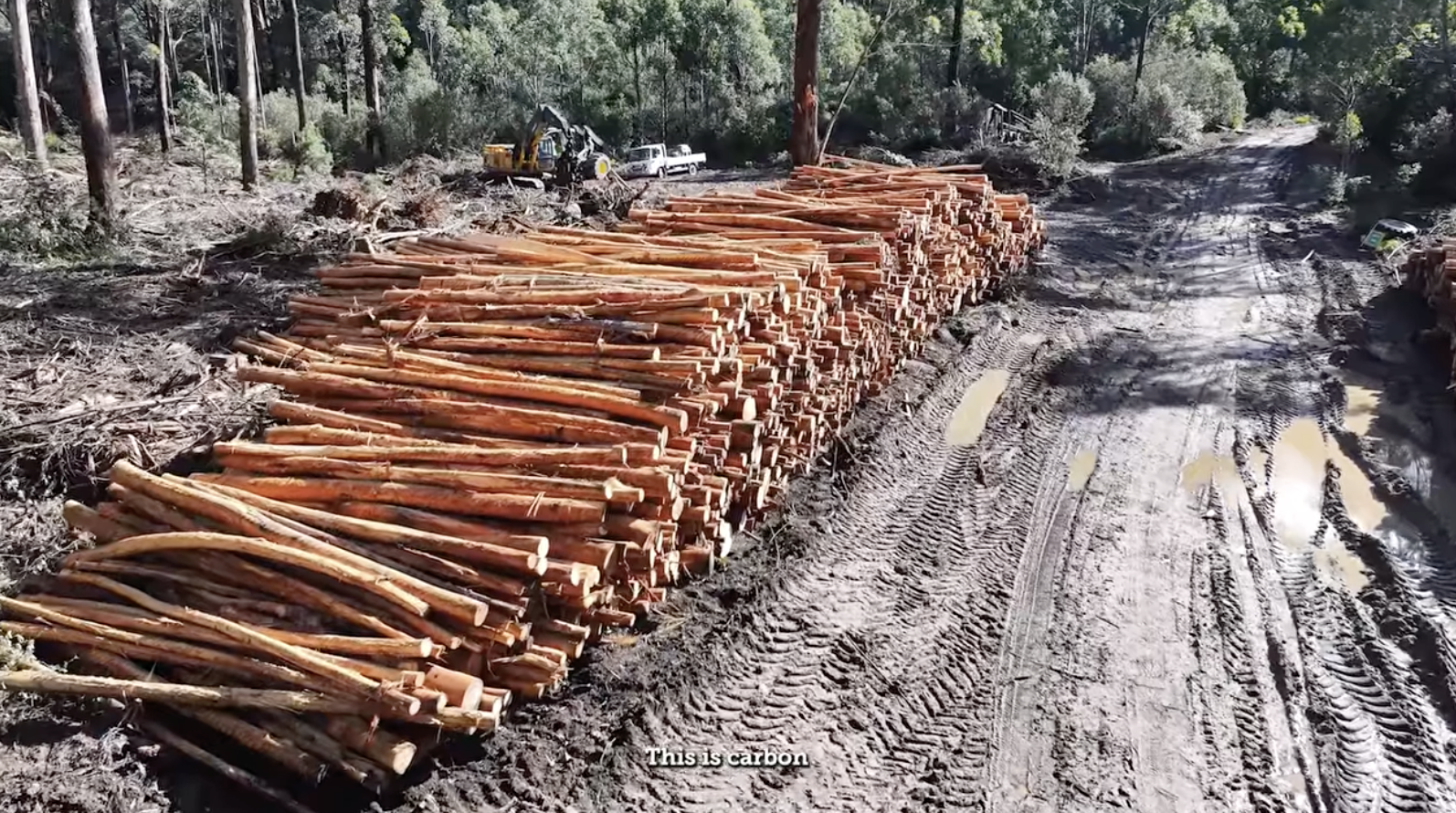
‘This is carbon that is about to get admitted into the atmosphere.’
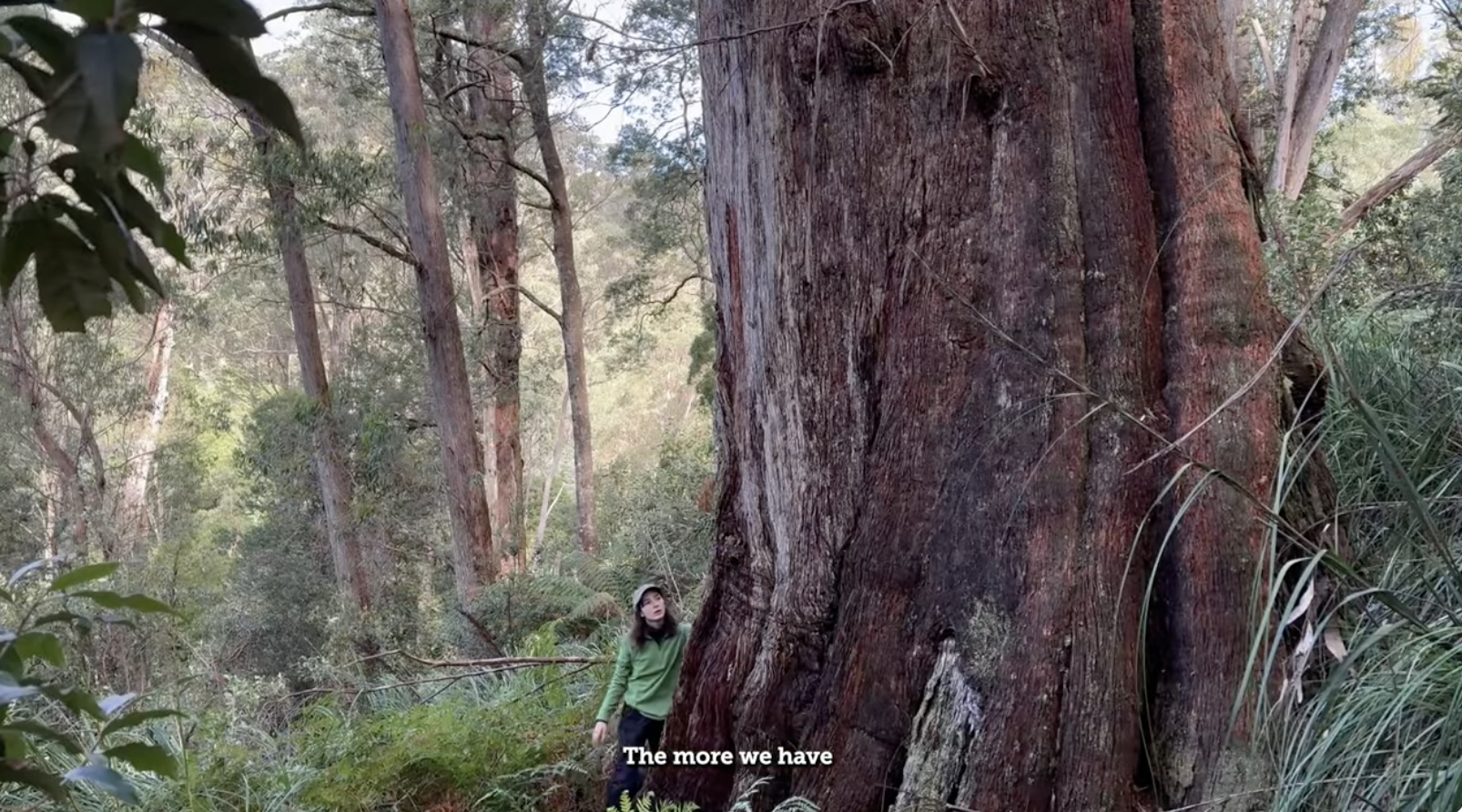
‘The more we have of this sort of carbon the better it is for our climate as well as the wildlife that uses this tree as a habitat.’
The views expressed in this article may or may not reflect those of Pearls and Irritations.
